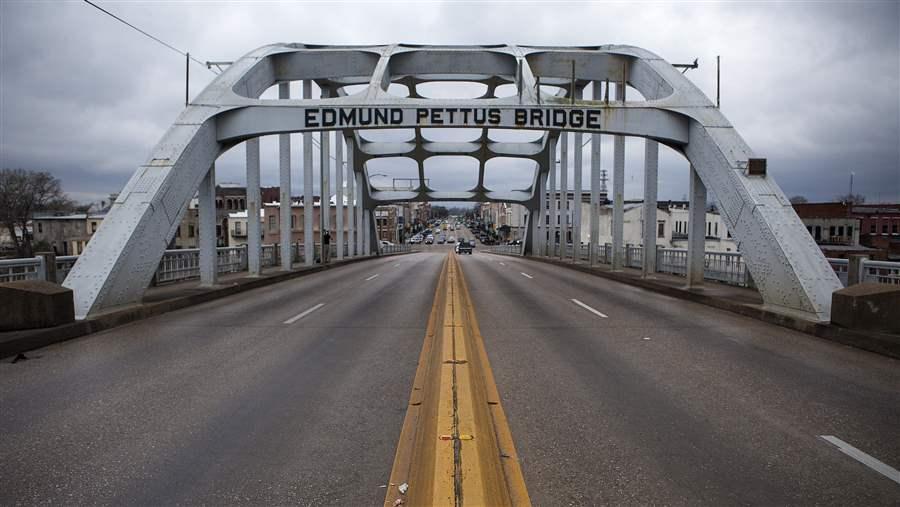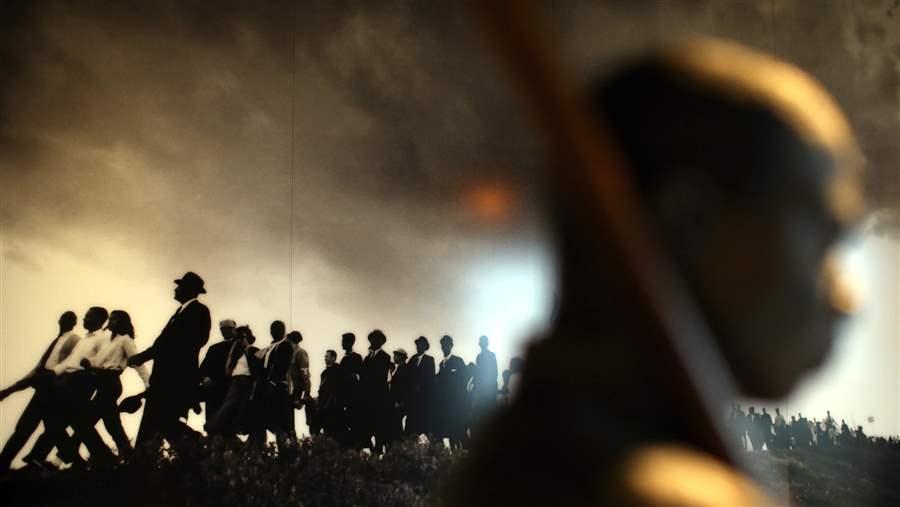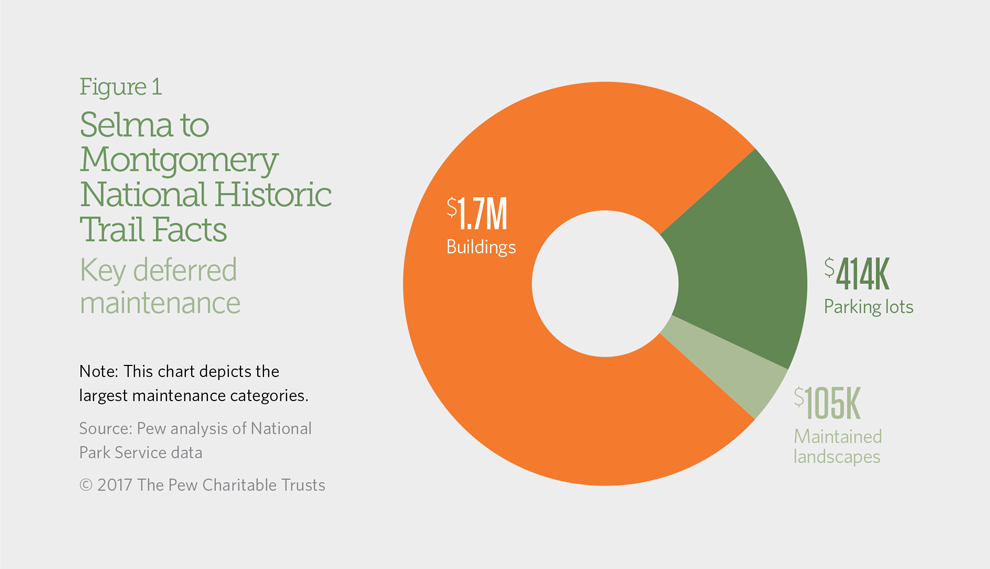Selma to Montgomery National Historic Trail
Alabama

Congress enacted legislation in 1996 to establish the Selma to Montgomery National Historic Trail, ensuring that our nation’s painful civil rights history is preserved.
© Brian van der Brug/Los Angeles Times/Getty ImagesPew created this case study using National Park Service deferred maintenance data issued in fiscal year 2016. The information listed here may no longer reflect the NPS site’s current condition or maintenance requirements. To find the most up-to-date information, please use the National Park Repair Needs tool.
Overview
In 1965, many counties in Alabama still used literacy tests, intimidation, and other techniques to prevent African-Americans from registering to vote. In Dallas County, only 2 percent of African-Americans were on voter rolls, and in the county next to it—Lowndes—none were registered. Civil rights activists, seeking to call attention to this injustice, initiated nonviolent protests in Selma early that year. The local sheriff’s department and state troopers responded with mass arrests and violence, culminating in the shooting on Feb. 18 of a deacon, Jimmie Lee Jackson. He died eight days later. On March 7, 600 protesters left the Brown Chapel A.M.E. Church in Selma with the goal of walking 54 miles to Montgomery, both as a memorial to Jackson and to advocate for voters’ rights. As they crossed the Edmund Pettus Bridge, police blocked their path and gave them two minutes to return home. The marchers stood their ground, and the officers attacked them with nightsticks and tear gas. More than 50 were injured.
The events, captured by the media, sparked outrage across the country, and the day became known as Bloody Sunday. A second march, led by Dr. Martin Luther King Jr. two days later, also resulted in a standoff with police. This time, the demonstrators turned back, but a group of local residents later attacked three white ministers who had participated, killing one of them, the Rev. James Reeb. In response, King and other civil rights leaders walked the 54 miles from Selma to Montgomery, arriving at the steps of the Capitol building on March 25, five days after they had set out, and joined by 25,000 people. Five months later, President Lyndon Johnson signed the Voting Rights Act, which prohibits discrimination in voting practices or procedures. Congress enacted legislation in 1996 to establish the Selma to Montgomery National Historic Trail, ensuring that our nation’s painful civil rights history is preserved. Today, the trail and buildings have more than $2 million in overdue repairs.

Some $2.2 million is needed to repair key sites along the trail, including updating displays at the Selma Interpretive Center.
© Justin Sullivan/Getty ImagesMaintenance challenges
Most of the needed repairs on the historic trail are to buildings and parking facilities. The Selma Interpretive Center, at the foot of the Edmund Pettus Bridge, has $1.3 million in deferred maintenance. About half that sum is needed to expand displays and develop an interpretive movie. Farther down the road at White Hall—at the trail’s midway point—lies the Lowndes Interpretive Center, which features an exhibit and bookstore. More than $360,000 is needed to repair the center, and $400,000 is needed to resurface its parking lot.
We must make the overdue and needed repairs at the Selma to Montgomery National Historic Trail because it tells the story of the civil rights struggle to ensure every eligible American—regardless of color—has voting rights.Bernard Simelton, president, Alabama NAACP
Recommendations
To address the deferred maintenance needs at Selma to Montgomery and other National Park Service sites in Alabama and across the country, Congress should:
- Ensure that infrastructure initiatives include provisions to address park maintenance.
- Provide dedicated annual federal funding for national park repairs.
- Enact innovative policy reforms to ensure that deferred maintenance does not escalate.
- Provide more highway funding for NPS maintenance needs.
- Create more opportunities for public-private collaboration and donations to help restore park infrastructure.
Selma to Montgomery National Historic Trail Facts
Calendar year 2016
| Visitor spending | $31.8 million |
| Jobs created by visitor spending | 510 |
| Economic output | $38.3 million |
| Labor income | $13.1 million |
| Deferred maintenance (fiscal year 2016) | $2.2 million |
Sources: National Park Service, “Annual Visitation Reports by Years: 2006 to 2016,” accessed Feb. 17, 2017, https://irma.nps.gov/Stats/ SSRSReports/National Reports/Annual Visitation By Park (1979 - Last Calendar Year); National Park Service, “Visitor Spending Effects,” accessed Aug. 22, 2016, https://www.nps.gov/subjects/socialscience/vse.htm; National Park Service, “NPS Deferred Maintenance Reports,” accessed Aug. 19, 2016, https://www.nps.gov/subjects/plandesignconstruct/defermain.htm. Pew converted National Park Service data from this webpage and other NPS sources into a searchable database. © 2017 The Pew Charitable Trusts
© 2017 The Pew Charitable Trusts













